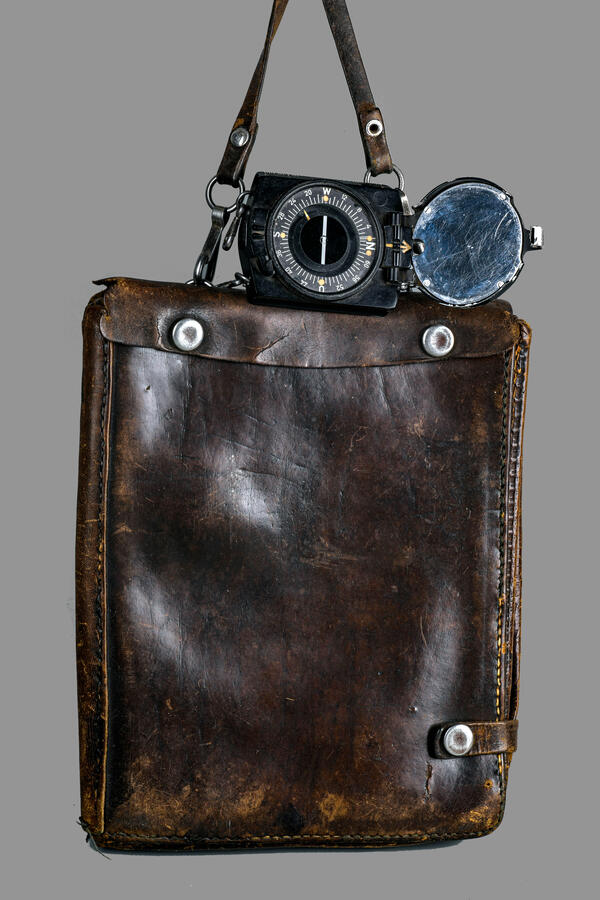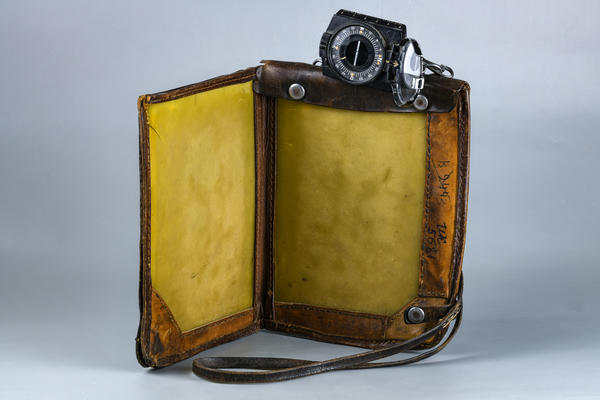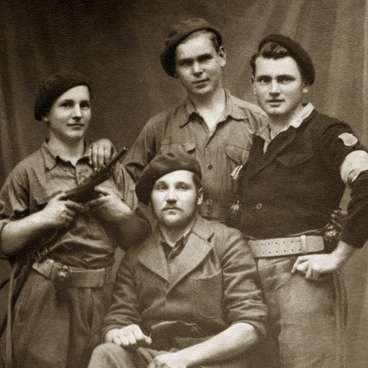This map holder for storing maps and papers was a necessary part of a Red Army Commander’s equipment. The holder’s shape and dimensions are designed to make it convenient to use as a support for writing letters. It is rectangular in shape, with two fastening buttons at the top and a buckle on the side. Inside, there is one compartment with transparent plastic (celluloid) to store maps and papers. The shoulder strap is fastened to the holder with rings and sling locks. The holder is made from brown genuine leather with a special finish to make it very strong, reliable and ensuring it lasts for a long time. By the end of the war, imitation leather was used instead of genuine leather.
A.P. Virko’s Officer’s Map Holder with Compass
Время создания
1940s
Размер
35х22х3 cm
Техника
factory made
Коллекция
4
Открыть в приложении#1
Unknown author
A.P. Virko’s Officer’s Map Holder with Compass
#2
#3
Opened Officer’s Map Holder
#4
This map holder’s owner was Andrei Petrovich Virko, who served on the front from the very first day of the Great Patriotic War. He fought in the first battle near Smolensk as a private and the division commander’s dispatch rider. On 6 August 1941, he became commander of a division during a battle after his commander was killed. Virko was wounded twice in this battle. Throughout his service, he fought in battles in Sychyovka, Rzhev and Kalinin. He also fought in Moscow. After the defeating the Nazis near Moscow, his unit was sent towards Rzhev, where the army was halting the enemy’s attack. Between March and June 1942, he studied at the Military-Political Training School in Ivanovo. He was then a lieutenant on the Kalinin front in the 262nd rifle division and the 788th artillery regiment. It was here that he was appointed as commissar of the 1st artillery battalion. He fought in battles with this division to liberate Kalinin and Smolensk Oblasts and Belarus. Between 1944 and 1945 he fought in Lithuania, and reached Konigsberg. On 19 February 1945, he was hospitalized. He heard about the victory in field-hospital № 3640, Orsk, which was situated in School № 49 on Sovetskaya Ulitsa.
On the front line, soldiers from both sides would wear captured equipment. An example of this is Andrei Petrovich Virko’s use of a Wehrmacht (the armed forces of Nazi Germany) standard-issue field compass, especially since the Russian army had a huge shortage of these. Flasks and mess kits were the most common captured items.
On the front line, soldiers from both sides would wear captured equipment. An example of this is Andrei Petrovich Virko’s use of a Wehrmacht (the armed forces of Nazi Germany) standard-issue field compass, especially since the Russian army had a huge shortage of these. Flasks and mess kits were the most common captured items.
#5
Ministry of Culture of the Russian Federation
читать дальшескрыть
00:00
00:00
1x
A.P. Virko’s Officer’s Map Holder with Compass
Время создания
1940s
Размер
35х22х3 cm
Техника
factory made
Коллекция
4
Открыть в приложении
Поделиться




